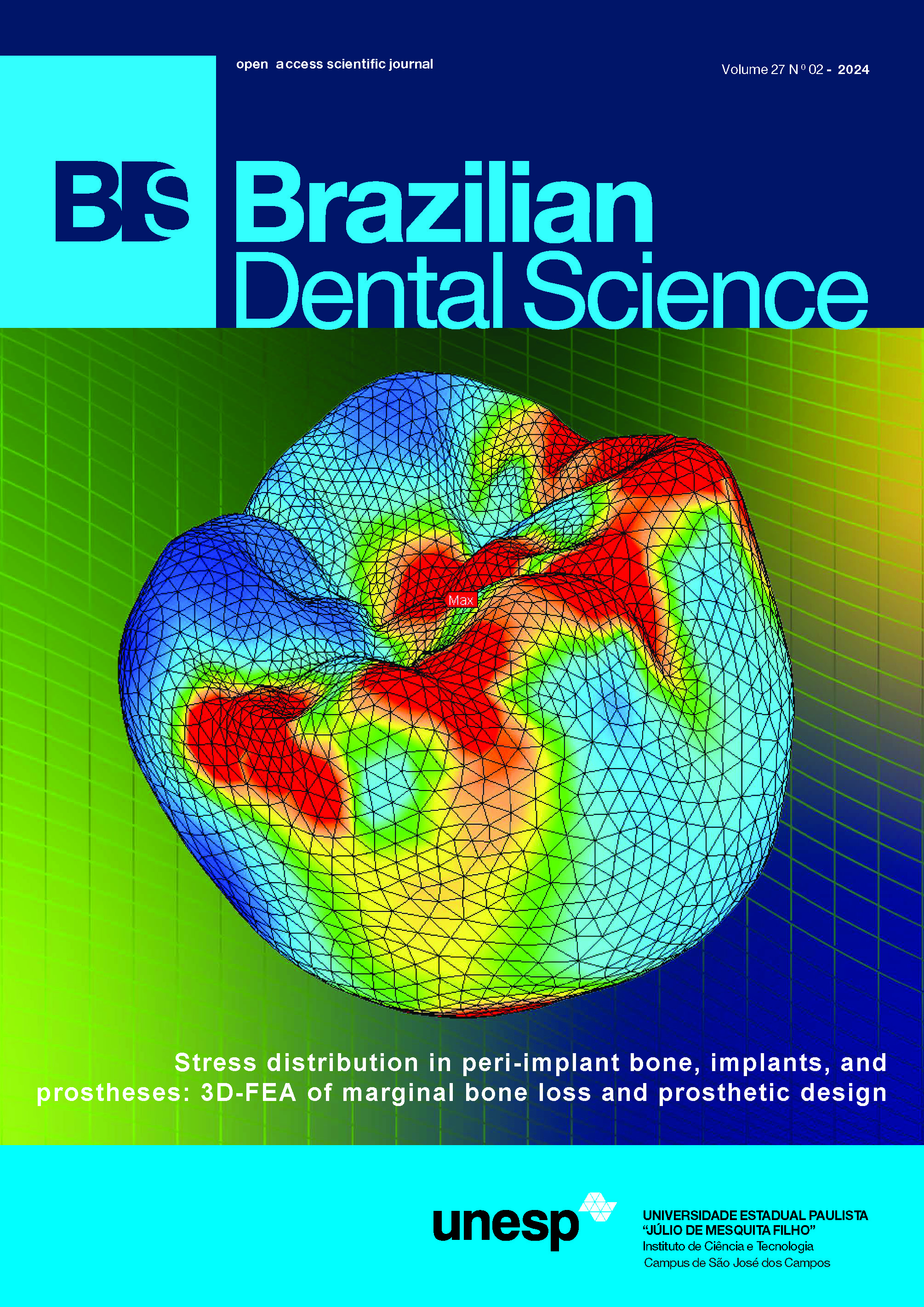Ex vivo tooth discoloration induced by calcium silicate-based materials: analysis of an experimental cement
DOI:
https://doi.org/10.4322/bds.2024.e4305Resumo
Objective: This study aimed to investigate of bioactive materials with specific properties, particularly highly plastic bioceramic cements. These materials are being studied extensively due to their potential to maintain pulp vitality and promote tissue regeneration. Material and Methods: Tooth discoloration induced by an experimental tricalcium silicate-based cement (EC) was evaluated and compared with that of Biodentine (BD) and white MTA-Angelus (MTA). Cavities were prepared on the lingual surfaces of thirty-two blocks of healthy bovine incisors. The blocks were chemically cleaned and then subjected to an initial color evaluation (CIELab values) using a spectrophotometer and randomly divided into three experimental groups (n=10); two additional blocks served as controls. After manipulation, the cements were placed in the cavities, which were subsequently restored with composite restorations. After another color measurement (baseline), they were immersed in bottles of distilled water; they were stored at 37 °C and 100% humidity for the entire test period. The color change (deltaE) was measured after 14, 30, 120 and 150 days. ANOVA and Tukey tests showed significant differences after 14 days (EC vs. MTA), 30 days (EC vs. BD) and 120/150 days (EC vs. BD/MTA) (p < 0.05). Results: All tested materials induced deltaE changes, with the EC group showing the least change at the end of the experiment (deltaE=4.08). Conclusion: EC induced less color change over a 5-month period and thus showed color stability over the entire period, whereas BD and MTA showed progressive discoloration.
KEYWORDS
Dental cements; Dental materials; Endodontics; Silicate cement; Tooth discoloration.
Downloads
Downloads
Publicado
Como Citar
Edição
Seção
Licença
TRANSFERÊNCIA DE DIREITOS AUTORAIS E DECLARAÇÃO DE RESPONSABILIDADE
Toda a propriedade de direitos autorais do artigo "____________________________________________________________________" é transferido do autor(es) para a CIÊNCIA ODONTOLÓGICA BRASILEIRA, no caso do trabalho ser publicado. O artigo não foi publicado em outro lugar e não foi submetido simultaneamente para publicação em outra revista.
Vimos por meio deste, atestar que trabalho é original e não apresenta dados manipulados, fraude ou plágio. Fizemos contribuição científica significativa para o estudo e estamos cientes dos dados apresentados e de acordo com a versão final do artigo. Assumimos total responsabilidade pelos aspectos éticos do estudo.
Este texto deve ser impresso e assinado por todos os autores. A versão digitalizada deverá ser apresentada como arquivo suplementar durante o processo de submissão.




























